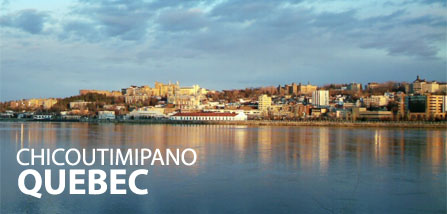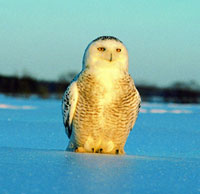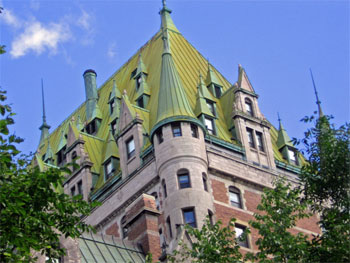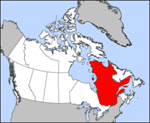 |
|
Traveling through Quebec is the occasion for the visitor to discover a province full of original activities. Each region proposes its own range of events and attractions, with much of the accommodation offering overnight stays and activity packages.
Of course, in this country of contrasting seasons and wide open spaces, the sport enthusiast will be overjoyed. In the summertime, the temperate climate favors golfing as well as climbing, hiking and white water rafting. Winter is ideal for skiing and other sliding sports, and it offers the perfect setting for the inquisitive traveller looking for such exotic activities as snowmobiling, dog-sledding and ice-fishing.
Those in search of more simple pleasures, whether cultural, educational or just relaxing activities, will also fill their needs. Quebec is a land of festivals, of gatherings and of grand events. In each region, one can find museums and interpretation centers, and the province has many provincial parks where you can witness the local fauna and flora in their natural surroundings. And dont forget the whale watching cruises and the black bear photo-safari!
 The harfang des neiges (snowy owl), official bird of Quebec. |
Between these quiet villages and the bustling cities, the visitor discovers the true meaning of these legendary wide open spaces he heard so much about and that made the reputation of Quebec as an exceptional travel destination. Its numerous national parks hide some magnificent treasures that await the adventurous soul. |
People come from everywhere to discover the different regions of Quebec, all unique, and each visit is a renewed occasion to enjoy original pleasures and memorable discoveries.
Whether you are looking for a quiet refuge to relax, a place to do all your favourite outdoor activities, or if you want to participate in one of the famous festivals, you will find here all the activities that will make your stay in Quebec unforgettable.
On this site, you will discover the hidden treasures of Quebec. You will also access a complete directory of the best accomodations available and find a detailed list of the many activities offered in Quebec throughout the seasons.
 Chateau Frontenac, the world's most photographed hotel, is iconic to the province of Quebec. |
The province occupies a vast territory (nearly three times the size of France), most of which is very sparsely populated. Quebec's highest point is Mont D'Iberville, which is located on the border with Newfoundland and Labrador in the northeastern part of the province.
The most populated region is the Saint Lawrence River valley in the south, where the capital, Quebec City, and the largest city, Montreal, are situated. The region is low-lying and flat, except for isolated igneous outcrops near Montreal called the Monteregian Hills. The combination of rich and easily arable soils and Quebec's warmest climate make the valley Quebec's most prolific agricultural area. A distinctive landscape is divided into narrow rectangular tracts of land that date back to settlement patterns in 17th century New France. The river is one of the worlds largest, sustaining large inland Atlantic ports at Montreal, Trois-Rivires, and Quebec City. The Saint Lawrence Seaway provides a link between the Gulf of Saint Lawrence and Great Lakes starting at the Saint-Lambert locks in Montreal.
More than 90 percent of Quebec's area lies within the Canadian Shield, a rough, rocky terrain sculpted and scraped clean of soil by successive ice ages. It is rich in the mineral and hydro-electric resources that are a mainstay of the Quebec economy. In the Labrador Peninsula portion of the Shield, the far northern region of Nunavik includes the Ungava Peninsula and consists of Arctic tundra inhabited mostly by the Inuit. Further south lie subarctic taiga and boreal forest, where spruce, fir, and poplar trees provide raw materials for Quebec's pulp and paper and lumber industries. Although inhabited principally by the Cree, Naskapi, and Innu First Nations, thousands of temporary workers reside at Radisson to service the massive James Bay Hydroelectric Project on the La Grande and Eastmain rivers. The southern portion of the shield extends to the Laurentians, a mountain range just north of Montreal and Quebec City that attracts local and international tourists to ski hills and lakeside resorts.
The tree-covered Appalachian Mountains flank the eastern portion of the province, extending from New England into the Eastern Townships, northeastward through the Beauce region, and on to the Gasp Peninsula, where they disappear into the Gulf of St. Lawrence. This region sustains a mix of forestry, industry, and tourism based on its natural resources and landscape.

